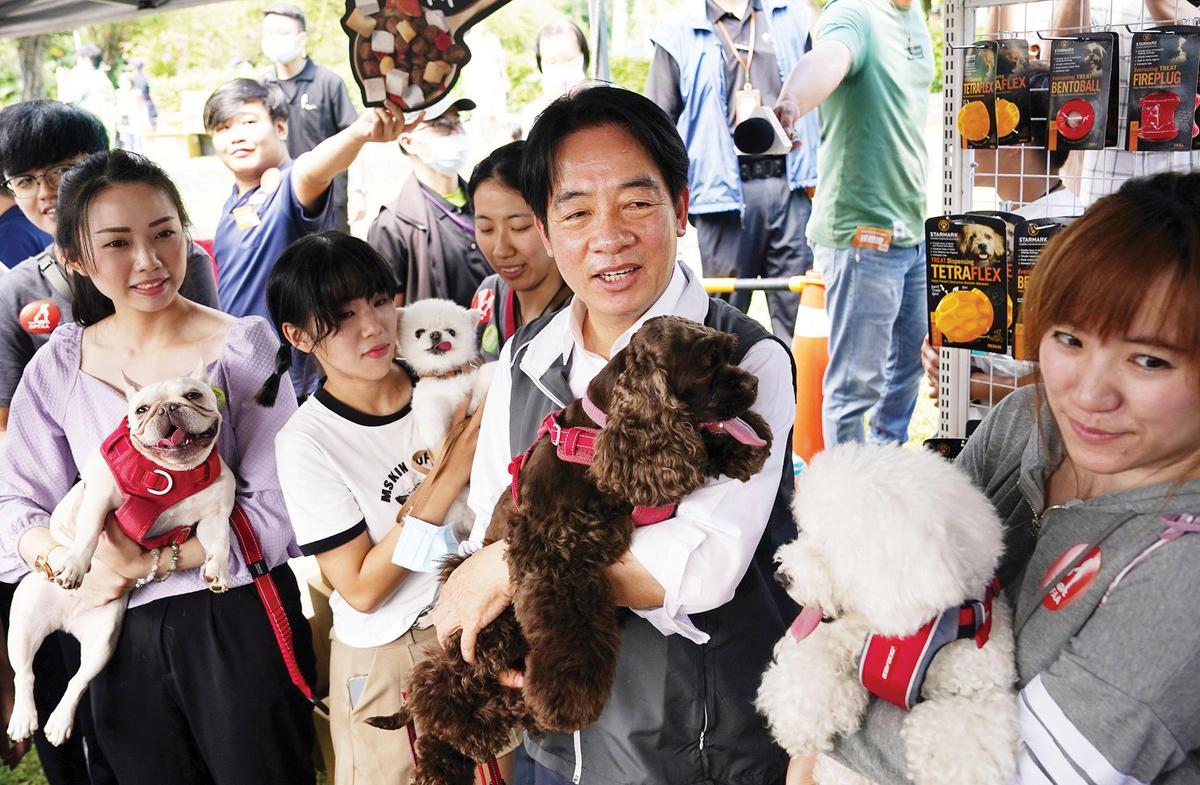Taiwan’s presidential elections on 13 January bring high stakes for the island’s cultural sector, which is campaigning for more attention as security concerns and technology dominate the discourse.
All three presidential candidates espouse a commitment to maintaining the status quo of a fragile peace with mainland China, but when it comes to domestic issues, the largest difference between them is the question of Taiwan’s cultural identity, either towards more traditionally Han Chinese, or as a more diverse, inclusive new Taiwan.
“The [incumbent] Democratic Progressive Party (DPP) wants culture to be more open and is concerned with encouraging a new Taiwanese culture that is not just that of the [majority] ethnic Han Chinese,” says Sean C.S. Hu, the owner of Taipei’s Double Square Gallery and the curator of the 2017 Spectrosynthesis LGBTQ-themed art exhibition at Taipei Museum of Contemporary Art.
The DPP’s vision of “diversity and possibility” embraces the island’s indigenous cultures as well as new immigrants and expatriates. “The Kuomintang [Taiwan’s main opposition party] opposes gender equality, is more conservative, and centres traditional Chinese culture,” Hu says. For example, it supports the continued inclusion of classical Chinese texts in school curricula. Both main parties have professional arts advisers on their payrolls, Hu says, while the upstart third party, Taiwan People’s Party (TPP), has yet to delineate its cultural positions.
The election presents a three-way race between the DPP’s Lai Ching-te (also known as William Lai), the Kuomintang (KMT) candidate Hou You-yi, and the TPP’s Ko Wen-je. Ko in 2019 openly opposed Taiwan’s legalisation of same-sex marriage, and Hou’s vice-presidential running mate Jaw Shaw-kong is an outspoken proponent of reunification with mainland China, albeit not under its present government.
The semiconductor industry has very large political clout. Soft power is not preferred in this societyKang-Ywe Lyau, art critic
Issues such as trade with mainland China and its alliance with the US dominate the electoral debate, followed closely by a stagnant macroeconomy and the associated cost-of-living challenges. Across party lines, Taiwan has put its soft-power eggs into a basket of microchips, as its high-tech industry forms a so-called silicon shield. “The semiconductor industry has very large political clout,” says the Taiwanese critic Kang-Ywe Lyau. The DPP “makes concessions [to the semiconductor industry] more than it did four years ago, when the favourites were solar energy, wind power and bio-tech companies.” The average Taiwanese person would prefer to work in semiconductors over the arts, Lyau says. “Soft power is not preferred in this society.” Lyau, is this week launching the Mandarin-language podcast Art Rising about the island's art and politics.
However, he says, “we do not see crowding-out effects from the government budget. The ministry of culture’s budget was NT$16.5bn ($530m) in 2016, and it amounts to NT$29.8bn ($960m) in the fiscal year 2024.” Overall, Lyau says, educational, scientific and cultural research will receive 19.5% of the fiscal year 2024 budget, compared with 15% for economic development.
“Art has never been a priority” for the government, Hu says, and response to pressure from the arts is “slow, but we can’t not do it.” The arts still only represent 1.2% of the total government budget, according to Hu, with too much of it used on one-off festivals that border on pro-ruling party propaganda. A candidate debate over arts policy in the 2012 election has yet to be repeated.
However, some progress has come in the form of the launch this year of a project providing up to $1m each for co-operative ventures with overseas institutions to exhibit Taiwanese artists abroad, Hu says. It will also fund some Taiwanese galleries’ presentations of home-grown artists at overseas art fairs.
In mid-December, a group of around 50 arts professionals convened a three-day round table on arts policy, producing a Visual Arts Sustainability Report that urges pro-activity from the cultural community and policy consistency between administrations. “The concern is that with each new political party coming into power in Taiwan, they introduce a completely new cultural and arts policy, lacking long-term planning and the accumulation of deep-rooted thinking,” it declares. “Culture must be accumulated.”
Highlighting the “innovative and impactful policies and plans in other regions of Asia,” the report predicts. “It is expected that we will be surpassed during this stagnant period.” While film and Mandarin-language music are also crucial, “in the development of culture and the arts during this time, the strength of Taiwan’s visual arts cannot be ignored.”
Identity politics
Even as the arts are sidelined, most Taiwanese artists are overtly political. “Currently, Taiwanese artists, especially in the field of visual arts, are concerned with identity recognition,” says Isa Ho, an artist and the chair of the Association of the Visual Arts in Taiwan. “The exploration of self comes from the anxiety, confusion and powerlessness in the larger environment. Other issues include Taiwan’s relatively liberal gender consciousness and the aging of society.”
Among its myriad concerns, Taiwan has become a beacon not just of democracy but of a functional civil society for Asia and the rest of the world. Even as mainland China’s government clamps down on the arts at home and is increasingly even intervening overseas to control cultural directions of the Chinese diaspora, Taiwan’s free-wheeling vision of a diversified, de-Sinified Chineseness is widely seen as defiant and exhilarating.
“Beyond semiconductors, culture can be a way to let more people see Taiwan,” Hu says. “It just needs more noise.”


